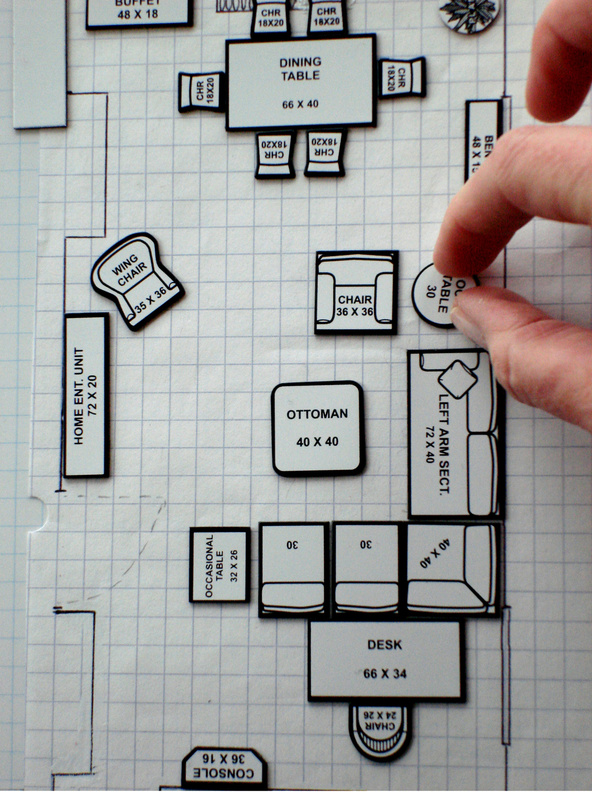Few tasks are more dreaded than the inevitable furniture rearranging that takes place after moving into a new home. Dragging your love seat from one corner of the living room to another (and then back to where you originally had it, of course) might help you find the best place to set up the TV, but it’s the type of experience you’d forswear — after you catch your breath.
Interior designers and architects avoid such exhausting scenarios by sketching out their plans in advance. Magnetic furniture arrangers — such as the one created by the Board Space-Planning Systems and sold by Libby Langdon Solutions ($109, Libbylangdon.com) — help ordinary folks skip the heavy lifting, too.
A little like Colorforms for very mature children, Langdon’s Furniture Arranger set comes with a magnetic dry-erase white board, a pen, a ruler and more than 250 furniture-shaped magnets. The 8-inch by 11-inch grid-lined workspace offers 1,344 square feet (each quarter-inch is equivalent to one foot) in which to arrange magnets representing various objects, from rectangular dining tables to sofas and sectionals.
After creating a setup on the magnetic panel, you can photocopy or scan your work for future reference. Homeowners with existing builder’s plans or blueprints can use the Arranger in a different way: by placing a design drawn in the same scale on the panel and adding magnets on top.
For testing purposes, I re-created a tiny version of my living room and discovered that the Furniture Arranger that seems to have everything is actually missing something: futon-shaped magnets. Color and pattern are nonexistent, too, but you probably don’t need to get quite so detailed (and if you do, you could use markers to color on the magnets).
Drawing on a whiteboard and moving around tiny televisions is surprisingly cathartic. Though I’m typically resistant to major furniture changes, I found myself wondering: “What would happen if I repositioned my bookcase across from the futon, rather than next it?” It was a revelation: Yes, there IS actually a situation in which moving a 6-foot-tall hardwood structure can be enjoyable.
The concept of using magnets to plan interior layouts feels retro — and wholly DIY — in an era of computer-based 3-D design tools. Here are a few more sources for hesitant furniture shufflers who don’t want to log extra hours in front of the computer screen.
Thekitchenplan.com: Multiple kits let you target specific rooms. A 200-piece Kitchen/Bath Floor Plan set ($68) offers magnets in shapes and sizes of popular cabinetry and fixtures; and the 350-piece Kitchen Elevation Kit ($90) includes objects such as wine racks and hutches.
Interiormodel.com: This Ireland-based company sells a boxed Home Design/House Planning Kit ($67) that contains two magnetic boards and more than 400 furniture options. Enclosed info cards include planning tips and advice.
Designertemplates.com: The 9-inch by 12-inch Magnetic Furniture Planner ($200) contains more than 450 black magnets and four panels on which to design residential rooms and offices. Intended for interior designers, it still seems straightforward to the average homeowner.
Send questions/comments to the editors.



Success. Please wait for the page to reload. If the page does not reload within 5 seconds, please refresh the page.
Enter your email and password to access comments.
Hi, to comment on stories you must . This profile is in addition to your subscription and website login.
Already have a commenting profile? .
Invalid username/password.
Please check your email to confirm and complete your registration.
Only subscribers are eligible to post comments. Please subscribe or login first for digital access. Here’s why.
Use the form below to reset your password. When you've submitted your account email, we will send an email with a reset code.